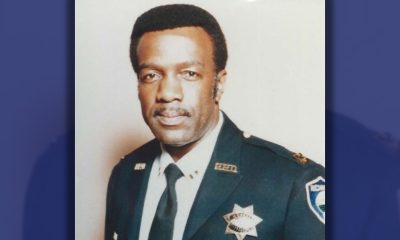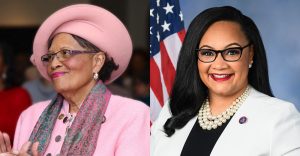#NNPA BlackPress
With Carolyn Bryant’s Death, Where is Justice for Emmett Till?
NNPA NEWSWIRE — Last year President Joe Biden signed the Emmett Till Antilynching Act into law — legislation that had previously been killed more than 200 times. The passage was a hard-fought win, but the activist William Barber III reminded us that no law, “verdict or election can bring about the racial reckoning America needs after 400 years of building systems that have rested upon White supremacy.”
The post With Carolyn Bryant’s Death, Where is Justice for Emmett Till? first appeared on BlackPressUSA.
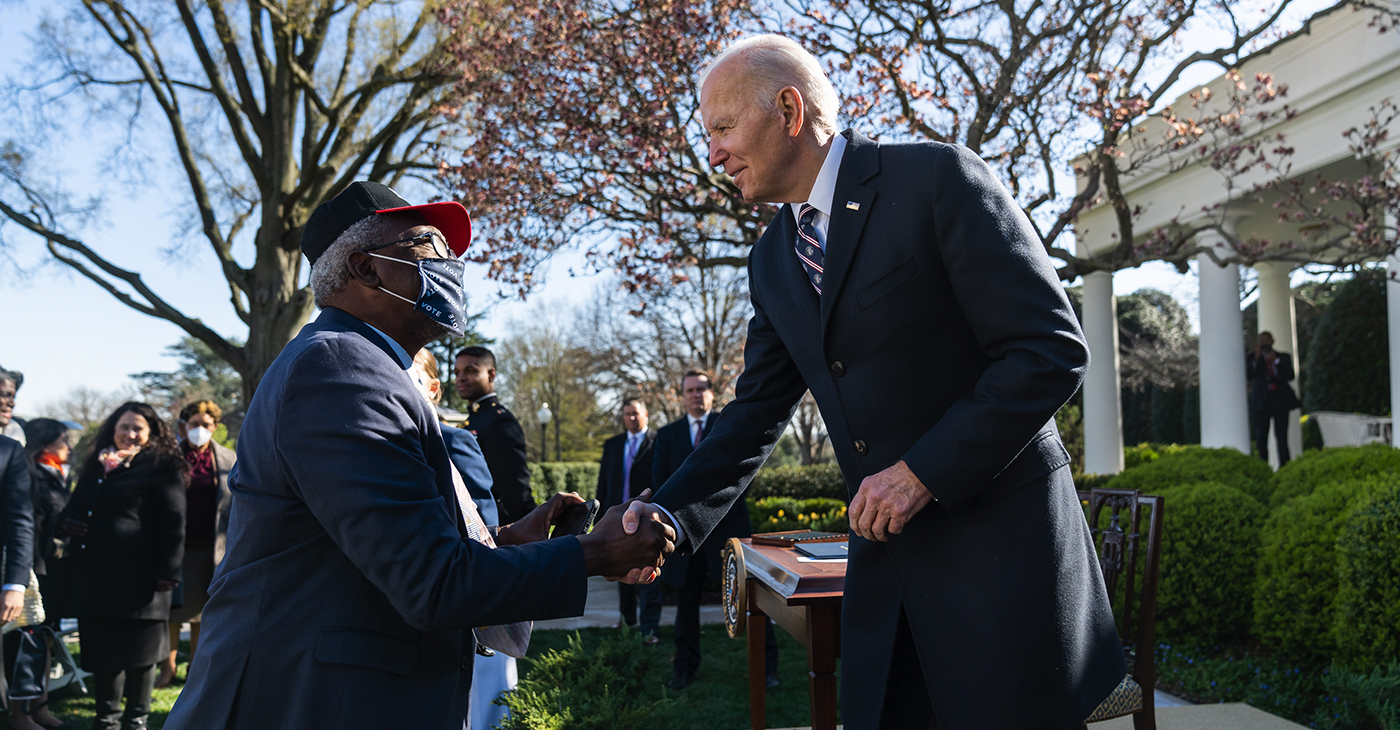
By Liz Courquet-Lesaulnier | Word in Black
Emmet Till deserved to grow old.
If he hadn’t been murdered in Money, Mississippi, on August 28, 1955 — if he had lived long enough to develop wrinkles and gray hair, and bounce his children, grandchildren, and possibly his great-grandchildren on his knees — he might have celebrated his 82nd birthday this July.
His mother, Mamie Till-Mobely, who died in 2003, might have had many happy years with her beloved son. She wouldn’t have gone to her grave with horrifying memories of his brutalized body. She wouldn’t have had to make the courageous decision to leave his casket open. There would have been no reason for her to say these heartbreaking words: “I wanted the world to see what they did to my baby.”
But thanks to the need of White men in the Jim Crow South to preserve the purity and honor of 21-year-old Carolyn Bryant — the White woman who falsely accused Till of making sexual advances at her — Emmet Till never made it past 14.
Carolyn Bryant — known later in life as Carolyn Bryant Donham — lived to the ripe old age of 88 without ever being held accountable for her part in Till’s murder.
As reporter Ed Pilkington wrote in the Guardian in 2020 about the people involved in Till’s murder, “Not a day has been spent in jail nor a penny paid in compensation.”
That was still true on April 25, the day Carolyn Bryant died.
A Last Chance for Justice
On the morning of April 27, before most people knew about Bryant’s death, the social media accounts of the Emmett Till Legacy Foundation — the nonprofit founded in 2005 by Till’s family posted black squares to their various pages.
The squares were, perhaps, an acknowledgment that with Bryant’s death, the family’s last chance for justice for Emmett Till — for anyone involved in his murder to be held accountable — was now gone.
“This is not a celebratory moment,” Keith A. Beauchamp, the filmmaker who co-wrote and produced the 2022 feature film “Till,” explained on his Facebook page.
“Since 1955, law enforcement and local officials have allowed Bryant – Donham to evade justice. It’s infuriating to come to the realization that the American judicial system has failed us yet again.”
In his post, Beauchamp also acknowledged, “The question that everyone should be asking is how and who allowed this predator to get away?
Like Till’s family, Beauchamp has long pursued truth and justice for the murdered teen.
Beauchamp spent 10 years making the 2005 documentary, “The Untold Story of Emmett Louis Till.”
The evidence he uncovered was instrumental to the U.S. government reopening its investigation of the case in 2004 — before the film was released. However, no charges ended up being brought, and the investigation closed in 2007.
The FBI reopened the case after the January 2017 publication of the book “The Blood of Emmett Till,” by historian and author Timothy B. Tyson.
Tyson spent an unprecedented amount of time with Bryant, and he detailed in the book that she admitted to him that she had lied.
Tyson wrote that Bryant said: “Nothing that boy did could ever justify what happened to him.” However, he was unable to produce an audio recording of that specific conversation — he only had a handwritten note of Bryant’s remarks. The Till case was closed again in 2021.
An Unserved Arrest Warrant
Bryant’s death came just two weeks after the April 13 announcement that Ricky Banks, the sheriff in Leflore County, Mississippi, had declined to serve a recently discovered 1955 arrest warrant for Carolyn Bryant.
Why wasn’t the warrant served in 1955? The then-sheriff decided he didn’t want to “bother” Bryant because she was a mother.
This unserved warrant was found in June 2022 at the Leflore County Courthouse by five members of the Emmett Till Legacy Foundation.
Despite the discovery of the warrant, in August 2022, a Leflore County grand jury refused to indict Bryant.
“It is evident that the outstanding warrant was not ever intended to be served in 1955 and obviously not intended to be served in 2022,” Deborah Watts, another cousin of Till and a co-founder of the Emmett Till Legacy Foundation, wrote in a statement at the time.
“This is a missed opportunity to break the cycle of protection that has been afforded to White women, specifically to Carolyn Holloway Bryant Donham, Mrs. Roy Bryant, the last living known accomplice, who has been allowed to escape full accountability and judicial judgment in this case. No family should ever have to endure this pain and injustice for this long,” Watts wrote.
In February 2023, another of Till’s cousins, Patricia Sterling, filed a federal lawsuit seeking to compel Banks to serve the warrant.
“But for Carolyn Bryant falsely claiming to her husband that Emmett Till assaulted her, Emmett would not have been murdered,” the lawsuit stated.
Bryant is widely believed to have identified Till to her husband, Roy Bryant, and J.W. Milam, Roy Bryant’s half-brother. It’s also believed that Carolyn Bryant helped the two men locate Till so that they could abduct him from his bed in his great-uncle’s home.
“It was Carolyn Bryant’s lie that sent Roy Bryant and JW Milam into a rage, which resulted in the mutilation of Emmett Till’s body into unrecognizable condition,” Sterling’s lawsuit stated.
However, on April 13, Banks’ attorney, Charles J. Swayze III, filed court papers stating, “Since the Grand Jury found no probable cause to indict Donham on the charges of kidnapping and manslaughter, there is no probable cause to support the 1955 Arrest Warrant.” Swayze also asked for Sterling’s federal lawsuit to be dismissed.
Despite this setback, the Till family didn’t give up.
In an April 26 Facebook post, Watts clarified that far from the discovery of the warrant being a surprise — as some news outlets had reported — she and the other foundation members were “intentionally Searching for the Unserved Warrant.”
Watts wrote that they found the warrant “within an hour and a half” of looking for it — raising the question of why it had not previously been discovered in the decades before.
Watts subsequently demanded “that Mississippi authorities that are responsible, do their jobs and #ServeTheWarrant now!”
Little did Watts know when she uploaded her post that Carolyn Bryant had died the day before.
We Can Never Forget
In 2003, one week before she died, Mamie Till Mobeley told Beauchamp to “tell Emmett’s story until man’s consciousness is risen, only then there will be justice for Emmett Till!”
Till’s “case is so relevant today because he is the Anne Frank for Black America,” Beauchamp wrote me in an email in 2015.
“Just like our Jewish brothers and sisters, we must continue to tell Emmett’s story over and over again.”
The details of what followed after Till’s abduction are horrific, but given the persistent attacks on teaching the truth about Black history — about American history — they bear repeating.
We know that Roy Bryant and J.W. Milam drove Till to a barn, stripped him naked, and tortured and beat him beyond recognition. A passerby reported hearing the boy crying out, “Mama, please save me.”
As the historian Tyson wrote, “Affronted White supremacy drove every blow.”
The men went on to gouge out one of Till’s eyes, shoot him in the head, and use barbed wire to tie his body to a 75-pound cotton gin. They then threw his body into the Tallahatchie River and took Till’s clothes and shoes home to burn them.
Despite the weight of the cotton gin, Till floated eight miles downstream. Once discovered, his body was only identifiable because of a silver ring on his pinky finger.
During Roy Bryant and J.W. Milam’s trial, Carolyn Bryant sat coolly beside her husband.
When called to testify, she claimed that Till had grabbed her hand and waist, asking her, “How about a date, baby?” She claimed he’d made sexually explicit comments and said he’d been with other White women.
Both men were acquitted in Sept. 1956 by an all-White jury.
We only know the details of Till’s murder because in 1956, Look magazine paid Roy Bryant and J.W. Milam $4,000 to spill the gruesome circumstances.
The article describes 5′ 4″ tall Till as looking “like a man” — a reminder of how from Emmett Till to Trayvon Martin to Tamir Rice, the combination of adultification and racism gets Black children killed.
Milam told the magazine that when a Black man “gets close to mentioning sex with a White woman, he’s tired o’ livin’. I’m likely to kill him. Me and my folks fought for this country, and we got some rights.”
He went on to say he told Till, “I’m going to make an example of you—just so everybody can know how me and my folks stand.”
Double jeopardy laws protected both men from being tried again for Till’s murder.
A Steep Price for Civil Rights
Surely, the actions of Mamie Till-Mobley weren’t what either man expected. The widely circulated photograph of Till’s mutilated body in the open casket requested by Till-Mobley shocked the world and galvanized the civil rights movement.
Her description of her son’s body is what no mother should ever have to see:
“I saw his tongue had been choked out and it was lying down on his chin. I saw that this eye was out, and it was lying about midway to cheek. I looked at this eye, and it was gone. I looked at the bridge of his nose, and it looked like someone had taken a meat chopper and chopped it. I looked at his teeth, because I took so much pride in his teeth. His teeth were the prettiest things I’d ever seen in my life, I thought. And I only saw two. Where are the rest of them? They had just been knocked out. And I was looking at his ears. His ears were like mine. They curled. They’re not attached, and they curled up the same way mine are. And I didn’t see the ear. Where’s the ear? And that’s when I discovered a hole about here, and I could see daylight on the other side. I said, now was it necessary to shoot him? If that’s a bullet hole, was that necessary? And I also discovered that they had taken an axe, and they had gone straight down across his head, and the face and the back of the head were separate.”
When you read Till-Mobley’s words, you understand why on Dec. 1, 1955, Rosa Parks had Emmett Till on her mind when she refused to go to the back of the bus — which led to her arrest and sparked the Montgomery Bus Boycott.
That, in turn, led to Martin Luther King Jr. becoming the president of the Montgomery Improvement Association — activism that catapulted him onto a national stage.
In 2005, the Rev. Al Sharpton told Democracy Now that because of Till-Mobley’s choice to open her son’s casket, “because she put the picture of this young man’s body on the conscience of America, she might have saved thousands of young Black men and young Black women’s lives.”
Last year President Joe Biden signed the Emmett Till Antilynching Act into law — legislation that had previously been killed more than 200 times. The passage was a hard-fought win, but the activist William Barber III reminded us that no law, “verdict or election can bring about the racial reckoning America needs after 400 years of building systems that have rested upon White supremacy.”
And what a steep price has been paid for our freedoms by Till and his family.
Another of his cousins, Thelma Wright Edwards, told the Guardian in 2020 that she didn’t actually want Bryant in jail due to the woman’s age.
However, “I do want Miss Bryant to admit she lied,” she said. “Stand up and tell the truth. We can’t move on until we hear it from her mouth.”
With Bryant’s death, that longed-for moment of accountability — of truth — will never come.
This piece was originally published by Word in Black.
The post With Carolyn Bryant’s death, where is justice for Emmett Till? appeared first on AFRO American Newspapers .
The post With Carolyn Bryant’s Death, Where is Justice for Emmett Till? first appeared on BlackPressUSA.
#NNPA BlackPress
IN MEMORIAM: Ramona Edelin, Influential Activist and Education Advocate, Dies at 78
NNPA NEWSWIRE — Born on September 4, 1945, in Los Angeles, California, activist Ramona Edelin’s early years were marked by a commitment to education and social justice. According to her HistoryMakers biography, after graduating from Fisk University with a Bachelor’s degree in 1967, she pursued further studies at the University of East Anglia in England. She earned her master’s degree before completing her Ph.D. at Boston University in 1981.
The post IN MEMORIAM: Ramona Edelin, Influential Activist and Education Advocate, Dies at 78 first appeared on BlackPressUSA.

By Stacy M. Brown, NNPA Newswire Senior National Correspondent
@StacyBrownMedia
Once upon a time, Black Americans were simply known as colored people, or Negroes. That is until Ramona Edelin came along. The activist, renowned for her pivotal roles in advancing civil rights, education reform, and community empowerment, died at her D.C. residence last month at the age of 78. Her death, finally confirmed this week by Barnaby Towns, a communications strategist who collaborated with Dr. Edelin, was attributed to cancer.
Born on September 4, 1945, in Los Angeles, California, Edelin’s early years were marked by a commitment to education and social justice. According to her HistoryMakers biography, after graduating from Fisk University with a Bachelor’s degree in 1967, she pursued further studies at the University of East Anglia in England. She earned her master’s degree before completing her Ph.D. at Boston University in 1981.
Edelin’s contributions to academia and activism were manifold. She was pivotal in popularizing the term “African American” alongside Rev. Jesse L. Jackson in the late 1980s.
Jackson had announced the preference for “African American,” speaking for summit organizers that included Dr. Edelin. “Just as we were called Colored, but were not that, and then Negro, but not that, to be called Black is just as baseless,” he said, adding that “African American” “has cultural integrity” and “puts us in our proper historical context.”
Later, Edelin told Ebony magazine, “Calling ourselves African Americans is the first step in the cultural offensive,” while linking the name change to a “cultural renaissance” in which Black Americans reconnected with their history and heritage.
“Who are we if we don’t acknowledge our motherland?” she asked later. “When a child in a ghetto calls himself African American, immediately he’s international. You’ve taken him from the ghetto and put him on the globe.”
The HistoryMakers bio noted that Edelin’s academic pursuits led her to found and chair the Department of African American Studies at Northeastern University, where she established herself as a leading voice.
Transitioning from academia to advocacy, Edelin joined the National Urban Coalition in 1977, eventually ascending to president and CEO. During her tenure, she spearheaded initiatives such as the “Say Yes to a Youngster’s Future” program, which provided crucial support in math, science, and technology to youth and teachers of color in urban areas. Her biography noted that Edelin’s efforts extended nationwide through partnerships with organizations like the National Science Foundation and the United States Department of Education.
President Bill Clinton recognized Edelin’s expertise by appointing her to the Presidential Board on Historically Black Colleges and Universities in 1998. She also co-founded and served as treasurer of the Black Leadership Forum, solidifying her standing as a respected leader in African American communities.
Beyond her professional achievements, Edelin dedicated herself to numerous boards and committees, including chairing the District of Columbia Educational Goals 2000 Panel and contributing to the Federal Advisory Committee for the Black Community Crusade for Children.
Throughout her life, Edelin received widespread recognition for her contributions. Ebony magazine honored her as one of the 100 Most Influential Black Americans, and she received prestigious awards such as the Southern Christian Leadership Award for Progressive Leadership and the IBM Community Executive Program Award.
The post IN MEMORIAM: Ramona Edelin, Influential Activist and Education Advocate, Dies at 78 first appeared on BlackPressUSA.
#NNPA BlackPress
Tennessee State University Board Disbanded by MAGA Loyalists as Assault on DE&I Continues
NNPA NEWSWIRE — Recent legislative actions in Tennessee, such as repealing police reform measures enacted after the killing of Tyre Nichols, underscore a troubling trend of undermining local control and perpetuating racist agendas. The new law preventing local governments from restricting police officers’ authority disregards community efforts to address systemic issues of police violence and racial profiling.
The post Tennessee State University Board Disbanded by MAGA Loyalists as Assault on DE&I Continues first appeared on BlackPressUSA.

By Stacy M. Brown, NNPA Newswire Senior National Correspondent
@StacyBrownMedia
Tennessee State University (TSU), the state’s only public historically Black college and university (HBCU), faces a tumultuous future as Gov. Bill Lee dissolved its board, a move supported by racist conservatives and MAGA Republicans in the Tennessee General Assembly, who follow the lead of the twice-impeached, four-times indicted, alleged sexual predator former President Donald Trump. Educators and others have denounced the move as an attack on diversity, equity, and inclusion (DE&I) and a grave setback for higher education.
Critics argue that TSU’s purported financial mismanagement is a manufactured crisis rooted in decades of underinvestment by the state government. They’ve noted that it continues a trend by conservatives and the racist MAGA movement to eliminate opportunities for Blacks in education, corporate America, and the public sector.
Gevin Reynolds, a former speechwriter for Vice President Kamala Harris, emphasizes in an op-ed that TSU’s financial difficulties are not the result of university leadership because a recent audit found no evidence of fraud or malfeasance.
Reynolds noted that the disbanding of TSU’s board is not an isolated incident but part of a broader assault on DE&I initiatives nationwide. Ten states, including Tennessee, have enacted laws banning DE&I policies on college campuses, while governors appointing MAGA loyalists to university trustee positions further undermine efforts to promote inclusivity and equality.
Moreover, recent legislative actions in Tennessee, such as repealing police reform measures enacted after the killing of Tyre Nichols, underscore a troubling trend of undermining local control and perpetuating racist agendas. The new law preventing local governments from restricting police officers’ authority disregards community efforts to address systemic issues of police violence and racial profiling.
The actions echo historical efforts to suppress Black progress, reminiscent of the violent backlash against gains made during the Reconstruction era. President Joe Biden warned during an appearance in New York last month that Trump desires to bring the nation back to the 18th and 19th centuries – in other words, to see, among other things, African Americans back in the chains of slavery, women subservient to men without any say over their bodies, and all voting rights restricted to white men.
The parallels are stark, with white supremacist ideologies used to justify attacks on Black institutions and disenfranchise marginalized communities, Reynolds argued.
In response to these challenges, advocates stress the urgency of collective action to defend democracy and combat systemic racism. Understanding that attacks on institutions like TSU are symptomatic of broader threats to democratic norms, they call for increased civic engagement and voting at all levels of government.
The actions of people dedicated to upholding the principles of inclusivity, equity, and justice for all will determine the outcome of the ongoing fight for democracy, Reynolds noted. “We are in a war for our democracy, one whose outcome will be determined by every line on every ballot at every precinct,” he stated.
The post Tennessee State University Board Disbanded by MAGA Loyalists as Assault on DE&I Continues first appeared on BlackPressUSA.
#NNPA BlackPress
Braxton Haulcy and the Expansion of Walker|West Music Academy
May 24, 2023 – Walker West Music Academy gets an early start on expansion. Join us for a Wednesday episode of The …
The post Braxton Haulcy and the Expansion of Walker|West Music Academy first appeared on BlackPressUSA.

May 24, 2023 – Walker West Music Academy gets an early start on expansion. Join us for a Wednesday episode of The …
The post Braxton Haulcy and the Expansion of Walker|West Music Academy first appeared on BlackPressUSA.
-

 Activism4 weeks ago
Activism4 weeks agoOakland Post: Week of March 27 – April 2, 2024
-
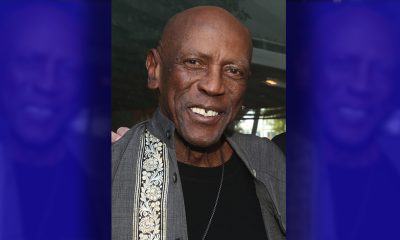
 #NNPA BlackPress4 weeks ago
#NNPA BlackPress4 weeks agoBeloved Actor and Activist Louis Cameron Gossett Jr. Dies at 87
-
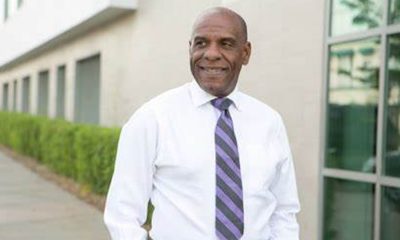
 Community1 week ago
Community1 week agoFinancial Assistance Bill for Descendants of Enslaved Persons to Help Them Purchase, Own, or Maintain a Home
-

 Activism3 weeks ago
Activism3 weeks agoOakland Post: Week of April 3 – 6, 2024
-

 Business2 weeks ago
Business2 weeks agoV.P. Kamala Harris: Americans With Criminal Records Will Soon Be Eligible for SBA Loans
-

 Activism2 weeks ago
Activism2 weeks agoOakland Post: Week of April 10 – 16, 2024
-

 Community1 week ago
Community1 week agoAG Bonta Says Oakland School Leaders Should Comply with State Laws to Avoid ‘Disparate Harm’ When Closing or Merging Schools
-
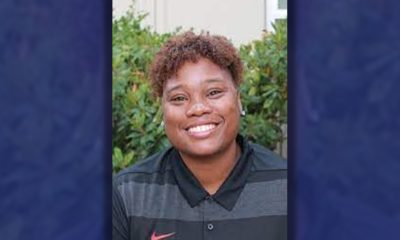
 Community6 days ago
Community6 days agoOakland WNBA Player to be Inducted Into Hall of Fame



